Grow Romaine Lettuce Home – sounds like a dream, right? Imagine stepping outside your back door and snipping fresh, crisp romaine for your salad, knowing exactly where it came from and what went into growing it. Forget those limp, overpriced heads at the grocery store! I’m here to tell you that cultivating your own romaine is not only possible, but surprisingly easy and rewarding, even if you don’t have a sprawling garden.
For centuries, romaine lettuce has been a staple in diets around the world, with roots tracing back to ancient Egypt. The Romans, of course, embraced it wholeheartedly (hence the name!), and its popularity has only grown since. But in today’s world, where food security and healthy eating are top of mind, knowing how to grow romaine lettuce home offers a sense of control and connection to your food source.
This DIY guide is packed with simple tricks and hacks that will empower you to nurture your own thriving romaine patch, whether you have a sunny balcony, a small patio, or a traditional garden bed. We’ll cover everything from seed starting to harvesting, troubleshooting common problems, and even some creative ways to maximize your yield. Ready to ditch the store-bought lettuce and embrace the joy of homegrown goodness? Let’s get started!
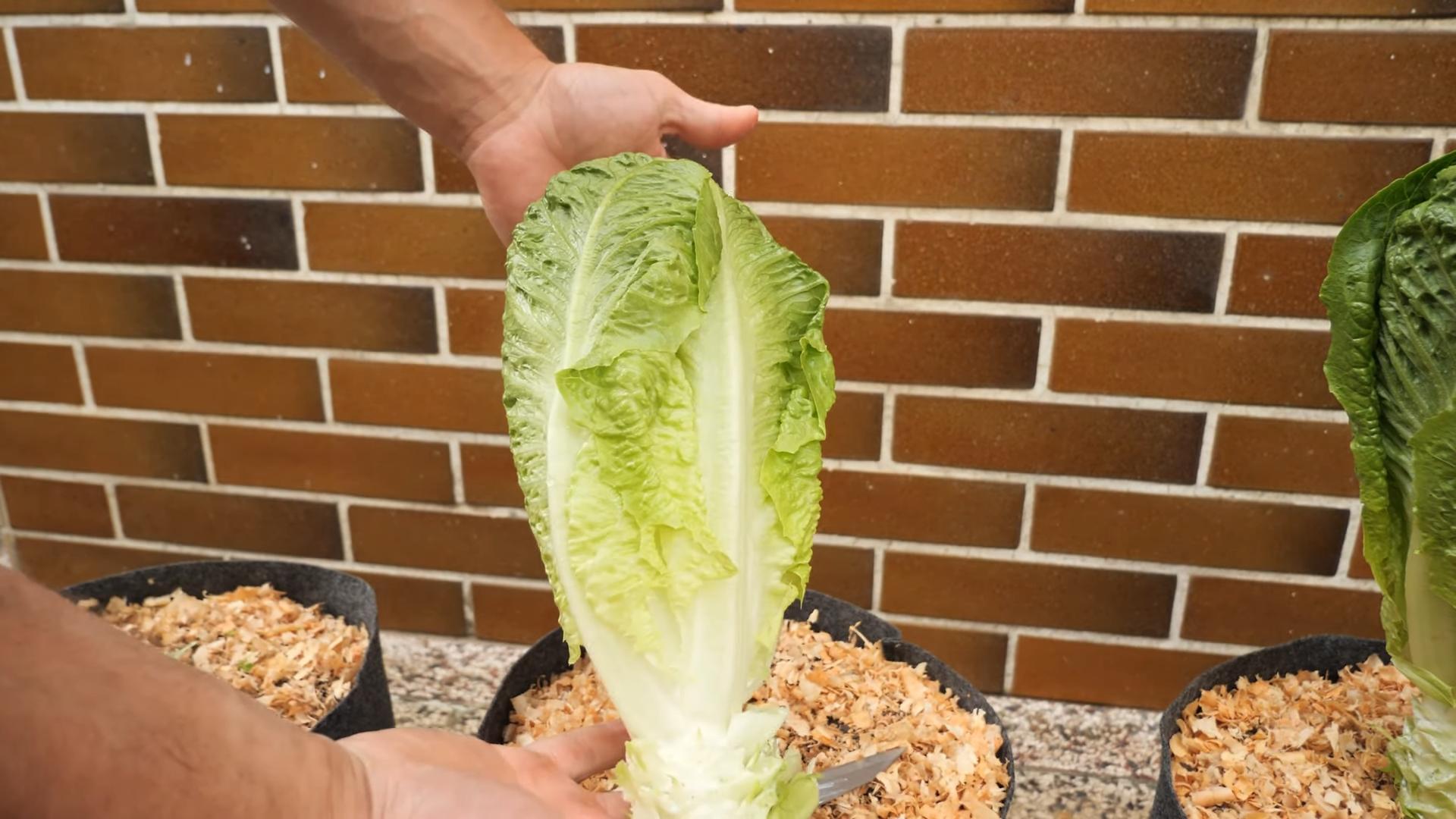
Growing Romaine Lettuce at Home: A Beginner’s Guide
Hey there, fellow gardening enthusiasts! I’m so excited to share my experience with growing romaine lettuce right in my own backyard (or even on a sunny windowsill!). It’s surprisingly easy, incredibly rewarding, and nothing beats the taste of fresh, homegrown lettuce in your salads. Let’s dive in!
Choosing Your Romaine Variety
First things first, you’ll need to decide which variety of romaine lettuce you want to grow. There are tons of options, each with slightly different characteristics. Here are a few popular choices:
* ‘Paris Island Cos’: This is a classic romaine variety, known for its upright growth and crisp, flavorful leaves. It’s also relatively heat-tolerant, which is a bonus if you live in a warmer climate.
* ‘Little Gem’: As the name suggests, this is a smaller romaine variety, perfect for container gardening or smaller spaces. It has a sweet, delicate flavor and a satisfying crunch.
* ‘Red Romaine’: If you’re looking to add some color to your garden (and your salads!), red romaine is a great choice. It has a slightly milder flavor than green romaine and adds a beautiful visual appeal.
* ‘Valmaine’: This variety is known for its resistance to bolting (going to seed), which is a common problem with lettuce in hot weather. It’s a reliable choice for a consistent harvest.
Once you’ve picked your variety, you can either start from seeds or purchase seedlings from your local garden center. I’ve done both, and honestly, starting from seeds is pretty straightforward and more cost-effective.
Starting from Seeds vs. Seedlings
Here’s a quick breakdown to help you decide:
* Seeds:
* Pros: More economical, wider variety selection, allows you to control the entire growing process.
* Cons: Requires more time and effort, seedlings can be delicate, may need to thin out seedlings.
* Seedlings:
* Pros: Faster start, less susceptible to early pests and diseases, easier to manage.
* Cons: More expensive, limited variety selection, may need to transplant carefully.
I personally prefer starting from seeds indoors about 4-6 weeks before the last expected frost. This gives them a head start and protects them from harsh weather.
Starting Romaine Lettuce Seeds Indoors
Here’s how I do it:
1. Gather Your Supplies: You’ll need:
* Romaine lettuce seeds
* Seed starting trays or small pots
* Seed starting mix (a light, well-draining soil)
* Spray bottle filled with water
* Grow lights (optional, but highly recommended)
* Heat mat (optional, but can speed up germination)
2. Prepare Your Seed Starting Trays: Fill your seed starting trays or pots with seed starting mix. Gently press down on the soil to firm it up a bit.
3. Sow the Seeds: Sprinkle a few seeds (2-3) into each cell or pot. Romaine lettuce seeds are small, so don’t bury them too deep. A light dusting of soil over the seeds is all you need.
4. Water Gently: Use a spray bottle to gently mist the soil. You want to keep the soil moist but not soggy.
5. Provide Light and Warmth: Place the trays under grow lights or in a sunny window. If you’re using a heat mat, place the trays on top of it. The ideal temperature for germination is around 60-70°F (15-21°C).
6. Keep the Soil Moist: Check the soil daily and mist with water as needed to keep it consistently moist.
7. Thin the Seedlings: Once the seedlings have emerged and have a couple of true leaves (the second set of leaves), thin them out, leaving only the strongest seedling in each cell or pot. I know it’s hard to do, but it’s essential for healthy growth!
Transplanting Your Romaine Lettuce Seedlings
Once your seedlings have grown a bit and the weather has warmed up (after the last frost), it’s time to transplant them outdoors.
1. Harden Off the Seedlings: Before transplanting, you’ll need to “harden off” the seedlings. This means gradually exposing them to outdoor conditions over a period of about a week. Start by placing them outside for a few hours each day, gradually increasing the amount of time they spend outdoors. This will help them adjust to the sun, wind, and temperature changes.
2. Prepare the Garden Bed: Choose a sunny spot in your garden with well-drained soil. Romaine lettuce prefers at least 6 hours of sunlight per day. Amend the soil with compost or other organic matter to improve its fertility and drainage.
3. Transplant the Seedlings: Gently remove the seedlings from their trays or pots. Dig small holes in the garden bed, spacing them about 6-8 inches apart. Place the seedlings in the holes and gently backfill with soil.
4. Water Thoroughly: Water the transplanted seedlings thoroughly to help them settle in.
5. Mulch Around the Plants: Apply a layer of mulch around the plants to help retain moisture, suppress weeds, and regulate soil temperature. I like to use straw or shredded leaves.
Growing Romaine Lettuce Directly in the Garden
If you live in a climate with mild winters, you can also sow romaine lettuce seeds directly in the garden.
1. Prepare the Soil: Choose a sunny spot with well-drained soil. Amend the soil with compost or other organic matter.
2. Sow the Seeds: Sow the seeds about 1/4 inch deep and 1 inch apart in rows.
3. Water Gently: Water the soil gently to keep it moist.
4. Thin the Seedlings: Once the seedlings have emerged, thin them out to about 6-8 inches apart.
Caring for Your Romaine Lettuce Plants
Once your romaine lettuce plants are established, here’s how to keep them happy and healthy:
* Watering: Water regularly, especially during dry periods. Romaine lettuce needs consistent moisture to thrive. Aim for about 1 inch of water per week. Water deeply at the base of the plants to avoid wetting the leaves, which can lead to fungal diseases.
* Fertilizing: Fertilize every few weeks with a balanced organic fertilizer. This will provide the plants with the nutrients they need to grow strong and healthy.
* Weeding: Keep the garden bed free of weeds. Weeds compete with the lettuce plants for water and nutrients.
* Pest Control: Keep an eye out for pests such as aphids, slugs, and snails. Handpick them off the plants or use organic pest control methods. I’ve found that a simple solution of soapy water can be effective against aphids.
* Bolting Prevention: Romaine lettuce is prone to bolting (going to seed) in hot weather. To prevent bolting, provide shade during the hottest part of the day, water regularly, and harvest the lettuce before it gets too mature. Choosing bolt-resistant varieties like ‘Valmaine’ also helps.
Harvesting Your Romaine Lettuce
The best part! You can start harvesting your romaine lettuce when the heads are about 6-8 inches tall.
1. Harvesting Individual Leaves: For a continuous harvest, you can harvest individual leaves from the outer part of the plant. Simply snip off the leaves with a sharp knife or scissors.
2. Harvesting the Entire Head: To harvest the entire head, cut it off at the base with a sharp knife.
3. Harvesting Time: Harvest in the morning, when the leaves are crisp and cool.
4. Storage: Store the harvested lettuce in the refrigerator in a plastic bag or container. It will keep for several days.
Troubleshooting Common Problems
Even with the best care, you might encounter some problems while growing romaine lettuce. Here are a few common issues and how to address them:
* Bolting: As mentioned earlier, bolting is a common problem in hot weather. Prevent it by providing shade, watering regularly, and harvesting early.
* Aphids: These tiny pests can suck the sap from the leaves, causing them to become distorted and yellow. Wash them off with a strong stream of water or use insecticidal soap.
* Slugs and Snails: These slimy creatures can munch on the leaves, leaving holes. Handpick them off the plants or use slug bait.
* Downy Mildew: This fungal disease can cause yellow spots on the leaves. Improve air circulation by spacing the plants properly and avoid overhead watering.
Container Gardening with Romaine Lettuce
Don’t have a garden? No problem! You can easily grow romaine lettuce in containers.
1. Choose the Right Container: Select a container that is at least 6 inches deep
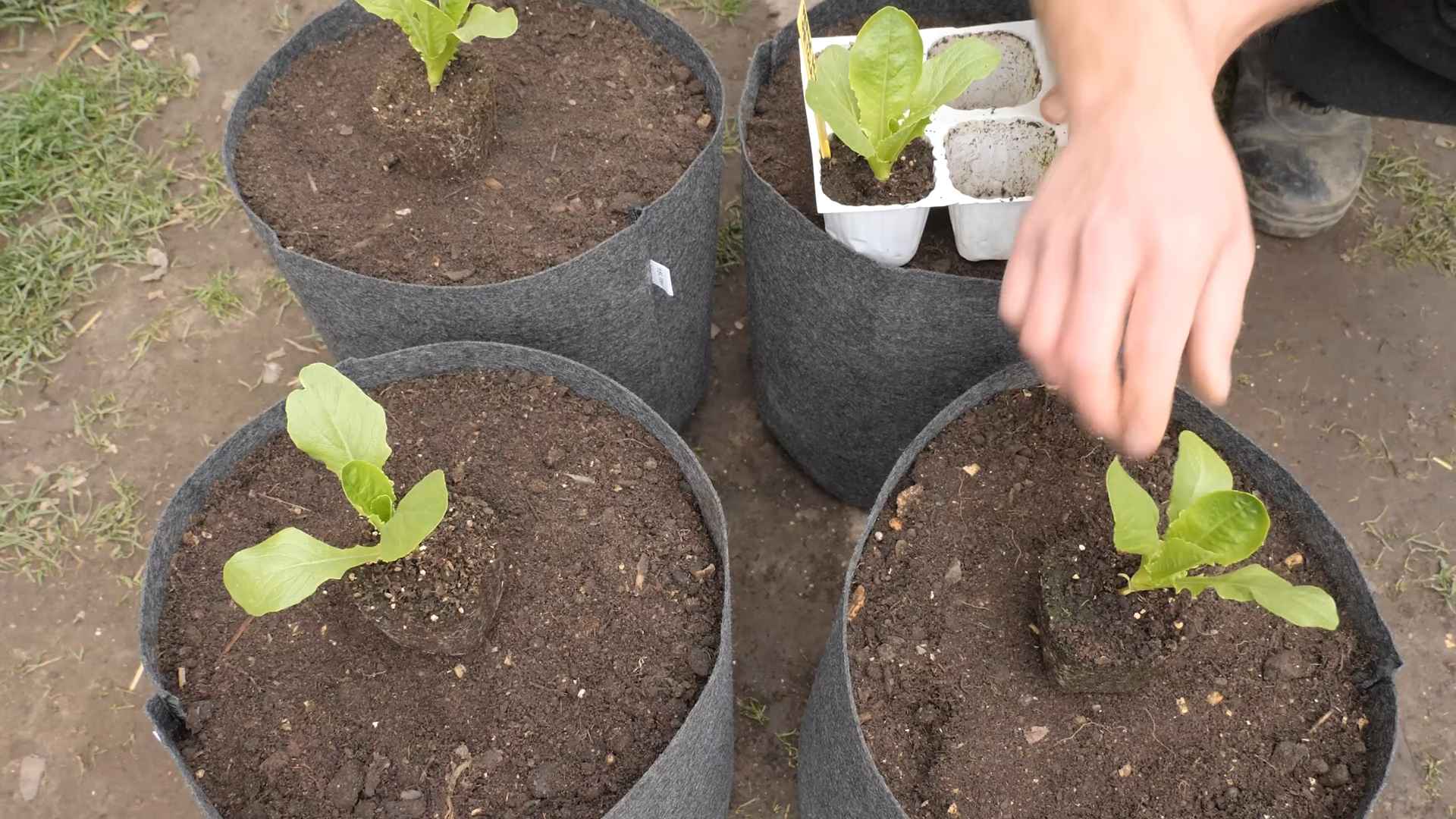
Conclusion
So, there you have it! Growing your own Romaine lettuce at home is not only achievable, but it’s also incredibly rewarding. Forget those limp, pre-packaged leaves from the grocery store. Imagine crisp, vibrant Romaine, bursting with flavor, ready to be harvested right from your own backyard or windowsill. This DIY trick is a must-try for anyone who values fresh, healthy ingredients and enjoys the satisfaction of creating something with their own hands.
Why is this method so compelling? First and foremost, you control the quality. You know exactly what goes into your lettuce – no pesticides, no questionable additives, just pure, natural goodness. Secondly, it’s incredibly cost-effective. A single packet of Romaine lettuce seeds can yield a continuous supply of fresh greens for weeks, even months, far outweighing the cost of repeatedly purchasing them from the store. Thirdly, it’s a fantastic way to reduce your environmental impact. By growing your own, you’re minimizing transportation costs and packaging waste, contributing to a more sustainable lifestyle.
But the benefits don’t stop there. Growing Romaine lettuce at home is also a therapeutic and educational experience. It’s a chance to connect with nature, learn about the growing process, and appreciate the simple pleasures of life. It’s a project that the whole family can enjoy, teaching children about where their food comes from and fostering a love for gardening.
Looking for variations? Absolutely! Try experimenting with different varieties of Romaine lettuce. There’s the classic ‘Paris Island Cos,’ known for its tall, upright heads, or the ‘Little Gem,’ a smaller, more compact variety perfect for container gardening. You can also explore different growing mediums, such as hydroponics, for a soilless approach. Consider adding companion plants like marigolds or basil to deter pests and enhance the flavor of your lettuce. If you’re growing indoors, ensure you have adequate lighting to promote healthy growth. A simple grow light can make a world of difference.
Don’t be afraid to get creative and personalize your growing experience. The beauty of this DIY trick is its adaptability. Whether you have a sprawling garden or a tiny apartment balcony, you can find a way to successfully grow Romaine lettuce at home.
We wholeheartedly encourage you to give this DIY trick a try. It’s easier than you think, and the rewards are well worth the effort. Once you’ve tasted the difference between homegrown Romaine and store-bought, you’ll never go back.
And most importantly, we want to hear about your experience! Share your photos, tips, and challenges in the comments below. Let’s create a community of home gardeners and inspire others to embrace the joy of growing their own Romaine lettuce. What are you waiting for? Get planting!
Frequently Asked Questions (FAQ)
What is the best time of year to grow Romaine lettuce?
Romaine lettuce thrives in cooler temperatures, ideally between 60°F and 70°F (15°C and 21°C). The best time to plant Romaine lettuce is in early spring or late summer/early fall. Avoid planting during the hottest months of summer, as the heat can cause the lettuce to bolt (go to seed), resulting in bitter-tasting leaves. If you live in a region with mild winters, you may even be able to grow Romaine lettuce year-round.
How much sunlight does Romaine lettuce need?
Romaine lettuce needs at least six hours of sunlight per day to grow properly. If you’re growing indoors, supplement with grow lights to ensure adequate light exposure. Insufficient sunlight can lead to leggy growth and pale, less flavorful leaves.
What kind of soil is best for growing Romaine lettuce?
Romaine lettuce prefers well-drained, fertile soil with a pH between 6.0 and 7.0. Amend your soil with compost or other organic matter to improve its drainage and nutrient content. If you’re growing in containers, use a high-quality potting mix specifically formulated for vegetables.
How often should I water Romaine lettuce?
Romaine lettuce needs consistent moisture to thrive. Water deeply whenever the top inch of soil feels dry to the touch. Avoid overwatering, as this can lead to root rot. Mulching around your plants can help retain moisture and suppress weeds.
How long does it take for Romaine lettuce to grow?
Romaine lettuce typically takes 65-75 days to mature from seed. However, you can start harvesting individual leaves as soon as they are large enough to eat, usually around 30-40 days after planting. This “cut-and-come-again” method allows you to enjoy a continuous supply of fresh lettuce.
What are some common pests and diseases that affect Romaine lettuce?
Common pests that affect Romaine lettuce include aphids, slugs, and snails. You can control these pests with organic methods such as handpicking, using insecticidal soap, or applying diatomaceous earth. Common diseases include downy mildew and powdery mildew. Prevent these diseases by providing good air circulation, avoiding overhead watering, and using disease-resistant varieties.
Can I grow Romaine lettuce in containers?
Yes, Romaine lettuce grows well in containers. Choose a container that is at least 6 inches deep and wide. Use a high-quality potting mix and ensure that the container has drainage holes. Place the container in a sunny location and water regularly.
How do I harvest Romaine lettuce?
You can harvest Romaine lettuce by either cutting the entire head at the base or by harvesting individual leaves as needed. If you’re harvesting the entire head, use a sharp knife to cut it just above the soil line. If you’re harvesting individual leaves, start with the outer leaves and work your way inwards.
How do I store Romaine lettuce after harvesting?
To store Romaine lettuce after harvesting, wash it thoroughly and dry it with a salad spinner or paper towels. Wrap the lettuce in a damp paper towel and store it in a plastic bag in the refrigerator. It should stay fresh for up to a week.
What if my Romaine lettuce starts to bolt?
Bolting is when the lettuce plant sends up a flower stalk and the leaves become bitter. This is usually caused by hot weather or stress. If your lettuce starts to bolt, you can try to extend its life by providing shade and watering it regularly. However, once the leaves become too bitter, it’s best to harvest the remaining leaves and start a new planting.
Is growing Romaine lettuce at home organic?
Growing Romaine lettuce at home can be organic if you use organic seeds, soil, and pest control methods. Avoid using synthetic fertilizers and pesticides. Look for certified organic products to ensure that they meet organic standards.
Can I save seeds from my Romaine lettuce?
Yes, you can save seeds from your Romaine lettuce, but it requires allowing the plant to bolt and produce flowers. Once the flowers dry and the seed pods mature, you can collect the seeds. However, keep in mind that if you’re growing multiple varieties of lettuce, they may cross-pollinate, resulting in seeds that don’t produce true-to-type plants.
What are some good companion plants for Romaine lettuce?
Good companion plants for Romaine lettuce include carrots, radishes, onions, garlic, and marigolds. These plants can help deter pests and improve the growth of your lettuce. Avoid planting lettuce near fennel, as it can inhibit its growth.
How can I prevent my Romaine lettuce from becoming bitter?
To prevent your Romaine lettuce from becoming bitter, ensure that it receives adequate water and sunlight. Avoid planting it during the hottest months of summer, as heat can cause it to bolt and become bitter. Harvest the leaves regularly to encourage new growth.
What are the nutritional benefits of Romaine lettuce?
Romaine lettuce is a good source of vitamins A and C, as well as folate and fiber. It’s also low in calories and fat, making it a healthy addition to your diet.

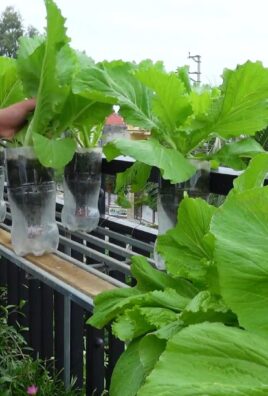
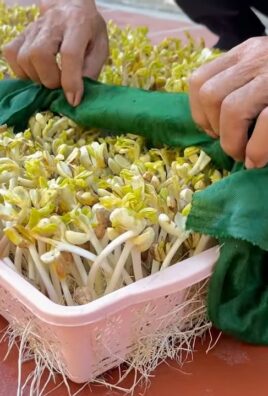
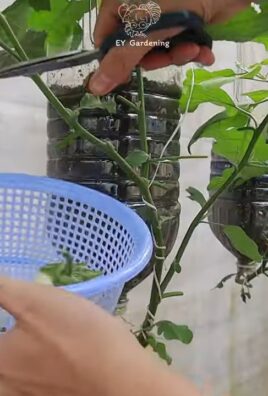
Leave a Comment